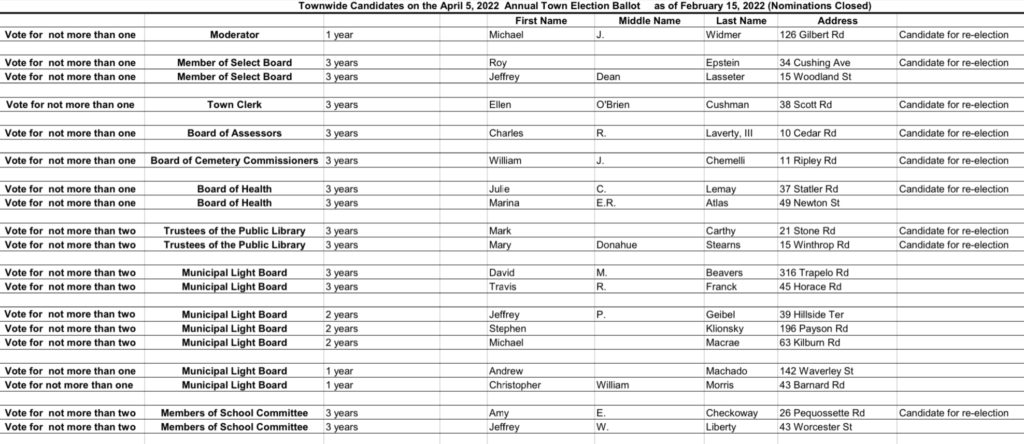Photo: The Belmont Town Clerk has released the draft ballot for the 2022 town election
A Belmont Center restaurant owner got his nomination papers into the Town Clerk’s Office just under the wire and will make it a race for the Select Board seat at the annual town election in April. Papers were due at the close of business on Tuesday, Feb. 15.
Jeffrey Lasseler, proprietor of Jamaica Jeffs on Leonard Street, is challenging incumbent Roy Epstein for the three year position. In the only other race with an incumbent, Julie Lemay will take on new comer Marina Atlas for a three year post on the Board of Health.
The only other competitive race will be for the pair of two-year seats on the newly-created Municipal Light Board where three residents are in the running: Jeffrey Geibel, Michael Macrea and current Municipal Light Advisory Board member Stephen Klionsky.
The town election will take place on Tuesday, April 5.
A list of town-wide offices for election are:

Due to reprecincting, It will be a literal free-for-all in the election of the newly-constituted Town Meeting. In four precincts, the entire 36-member slate will be on the ballot with the 12 members with the largest vote tally appointed to a three-year seat with the next 12 to two years and those coming in 25-36 taking a one-year term. For voters in precinct 8, voters will have 46 candidates to choose from to fill those 36 seats. The three other precincts whose lines were changed – 1 (42), 2 (40) and 6 (42) – will have 40-plus candidates while Precinct 7 will see its legislative representatives completely change as 20 residents will be running against only 4 incumbents for those 12 seats.
You can see who the candidates for Town Meeting on the Town Clerk’s page here.
